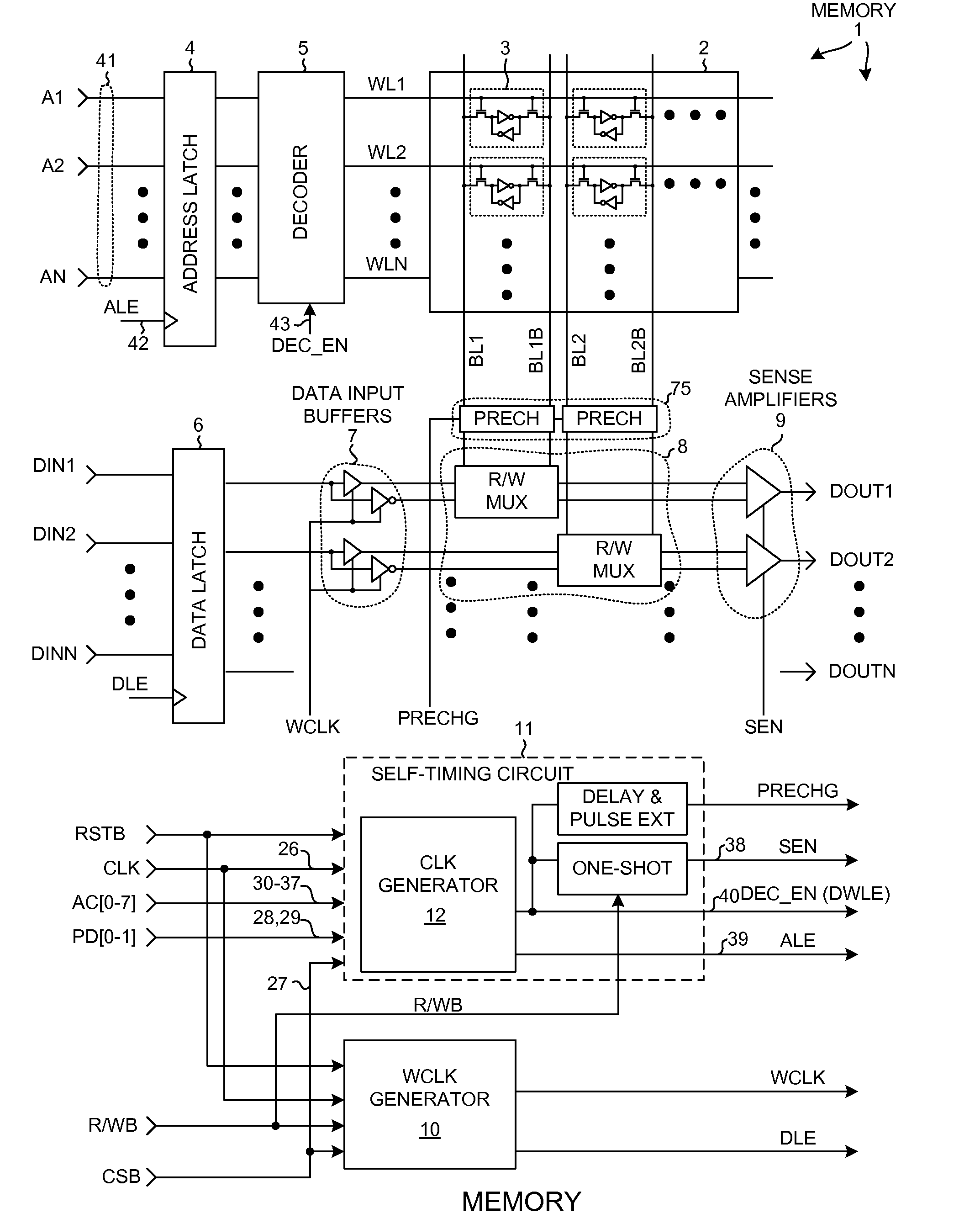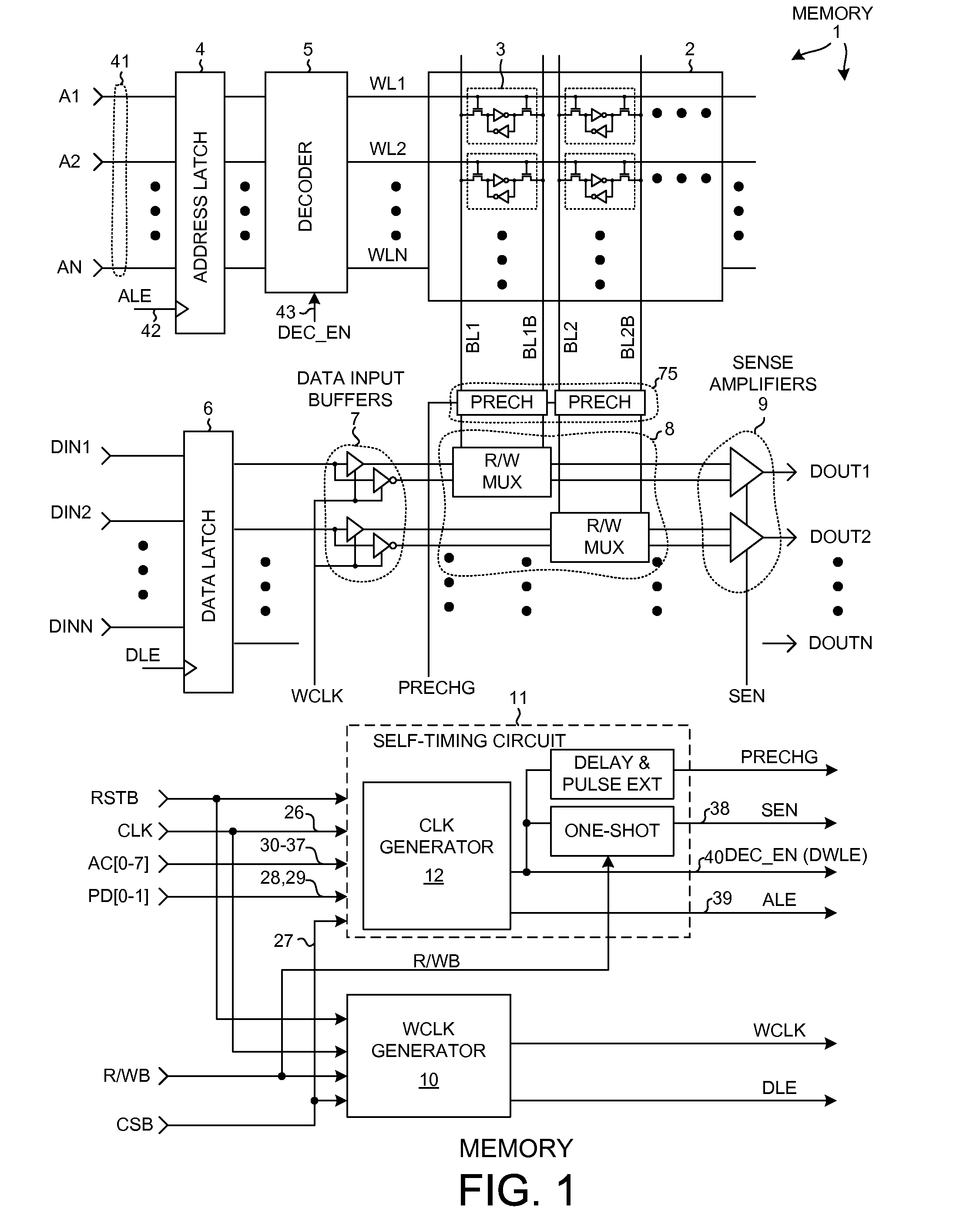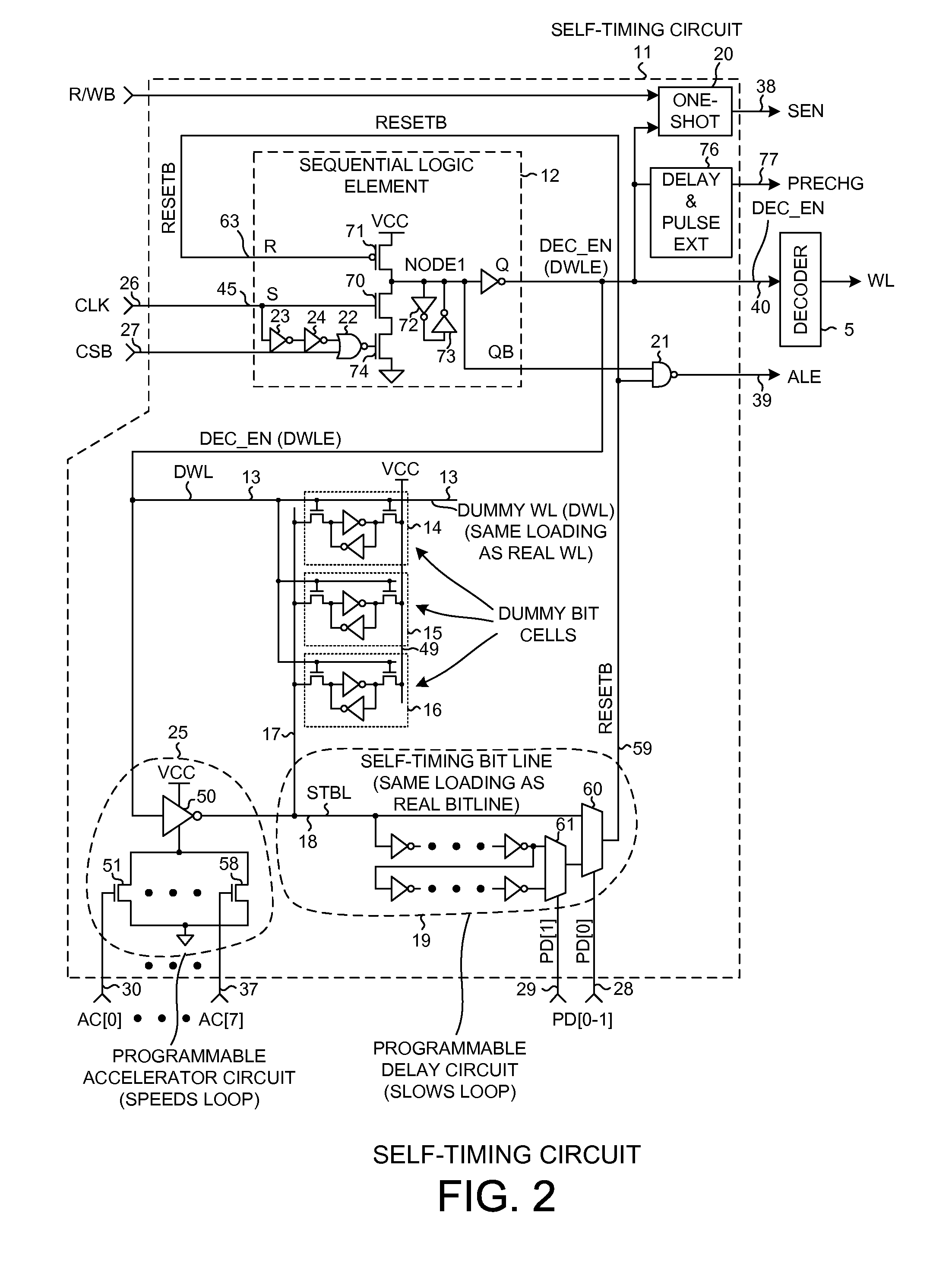Self-timing circuit with programmable delay and programmable accelerator circuits
a self-timing circuit and accelerator technology, applied in the field of self-timing circuits, can solve the problems of unnecessarily long access time of memory, insufficient magnitude of differential voltage, and inability to output erroneous data by sense amplifiers, etc., and achieve the effect of fast access time and slow access tim
- Summary
- Abstract
- Description
- Claims
- Application Information
AI Technical Summary
Benefits of technology
Problems solved by technology
Method used
Image
Examples
Embodiment Construction
[0017]FIG. 1 is a simplified diagram of a semiconductor memory integrated circuit device 1. Memory device 1 is a static random access memory (SRAM). Memory device 1 includes an array 2 of bit cells 3 that are arranged in rows and columns. Each row of bit cells has an associated horizontally extending word line. The word lines are designated WL1 through WLN in the figure. Each column of bit cells has an associated pair of vertically extending bit lines. In the diagram, the leftmost pair of bit lines is designed BL1 and BL1B and the next leftmost pair of bit lines is designated BL2 and BL2B. As illustrated, each bit cell is a six-transistor cell and involves a cross-coupled pair of inverters and a pair of access transistors. Memory device 1 also includes an address latch 4, a row decoder 5, a data input latch 6, data input buffers 7, read / write multiplexers 8, sense amplifiers 9, precharge circuits 75, a write clock generator circuit 10, and a self-timing circuit 11.
[0018]FIG. 2 is a ...
PUM
 Login to View More
Login to View More Abstract
Description
Claims
Application Information
 Login to View More
Login to View More - R&D
- Intellectual Property
- Life Sciences
- Materials
- Tech Scout
- Unparalleled Data Quality
- Higher Quality Content
- 60% Fewer Hallucinations
Browse by: Latest US Patents, China's latest patents, Technical Efficacy Thesaurus, Application Domain, Technology Topic, Popular Technical Reports.
© 2025 PatSnap. All rights reserved.Legal|Privacy policy|Modern Slavery Act Transparency Statement|Sitemap|About US| Contact US: help@patsnap.com



